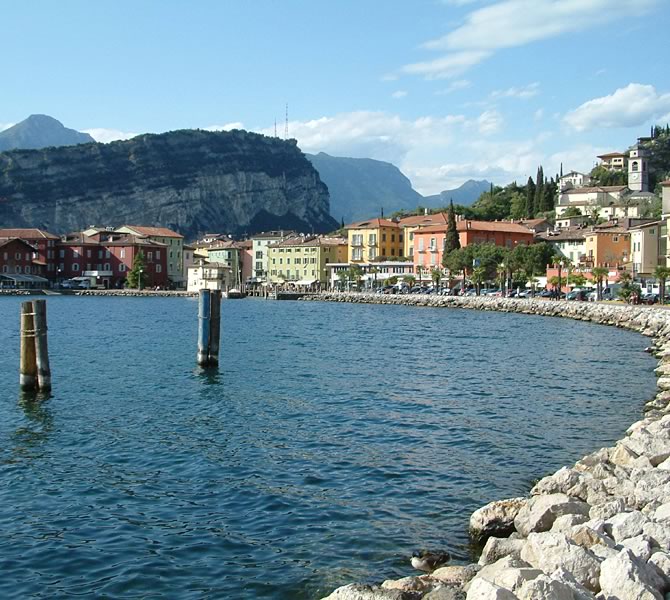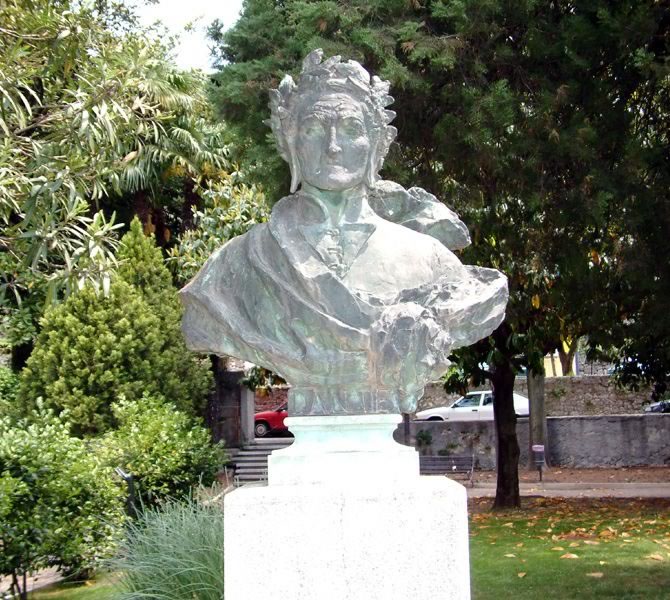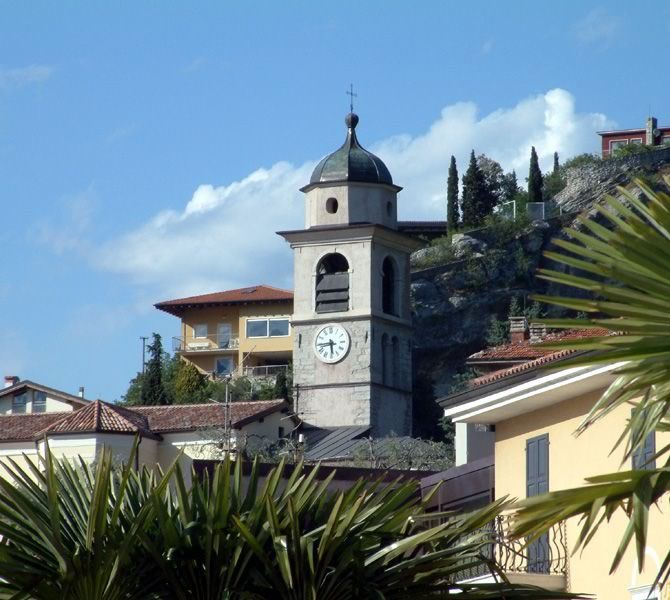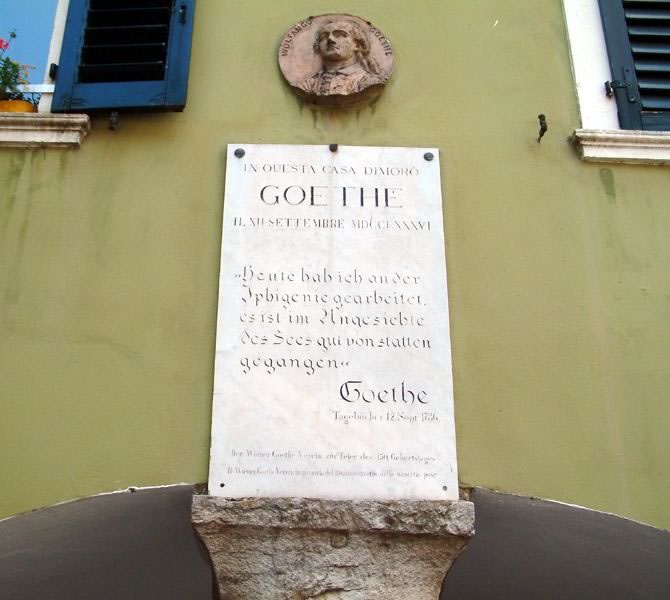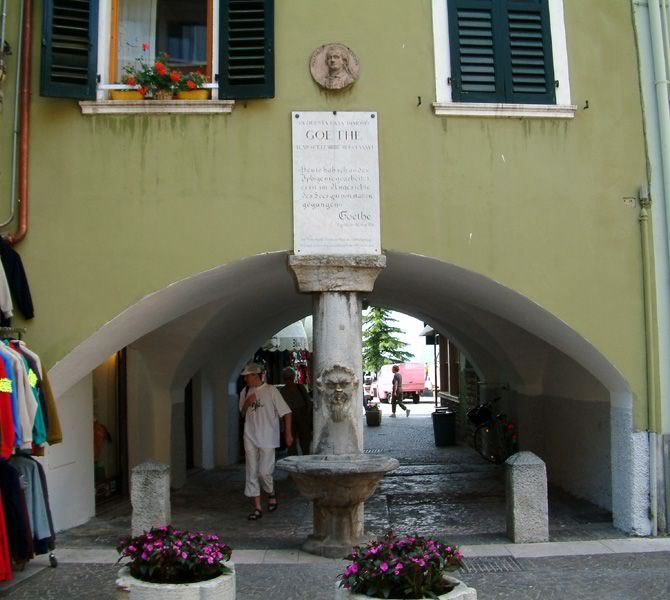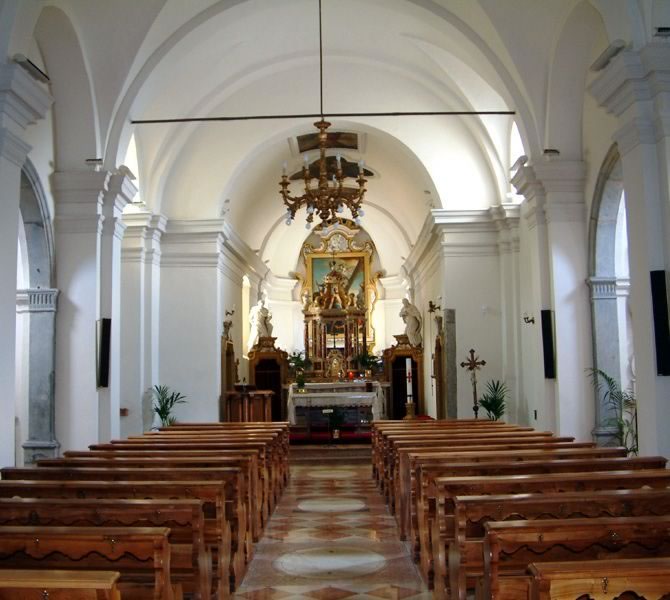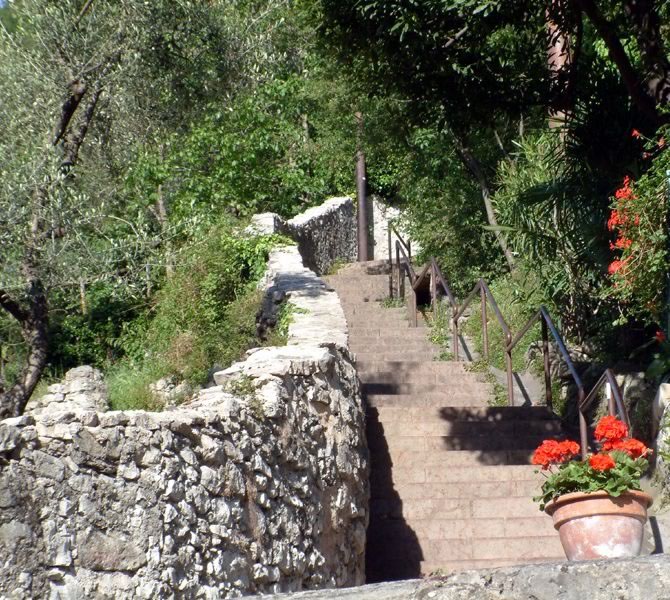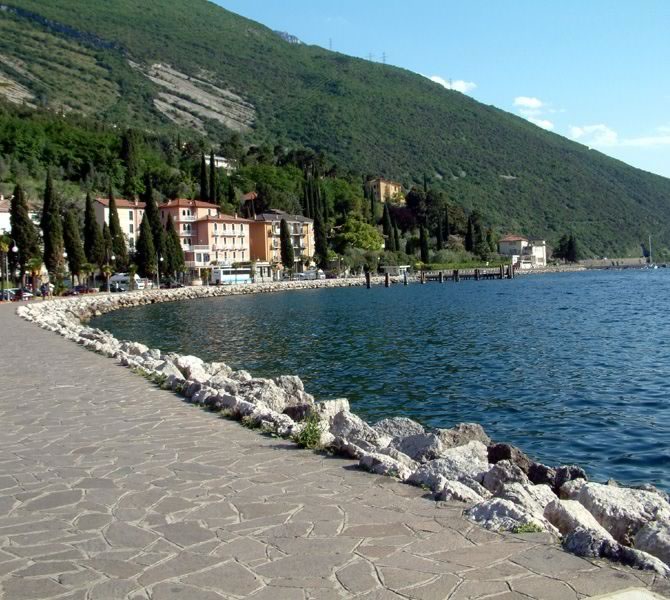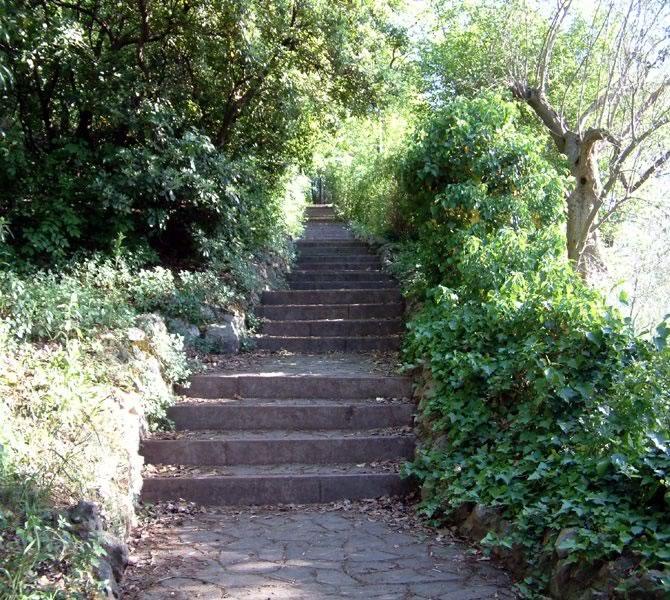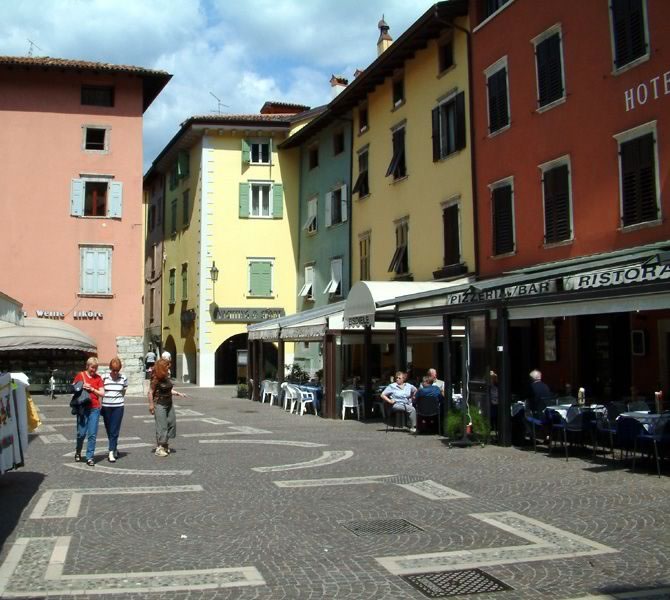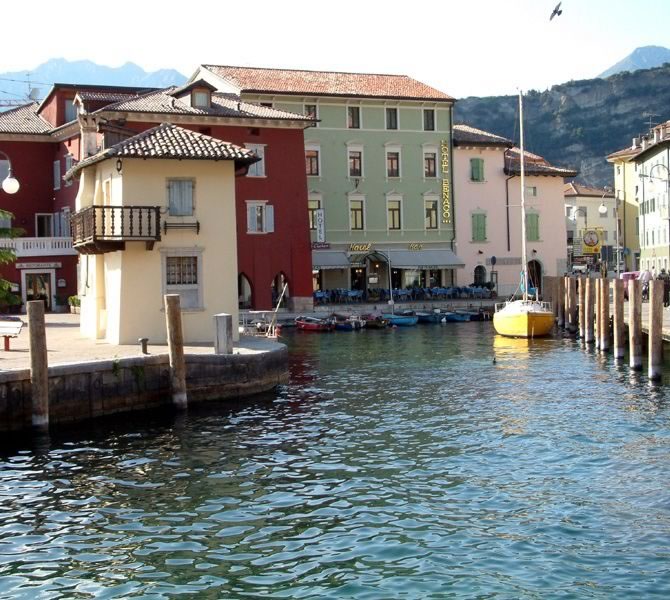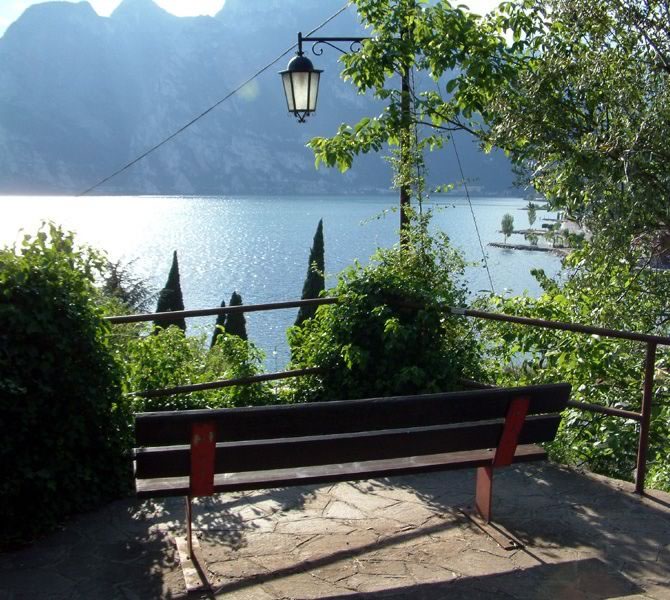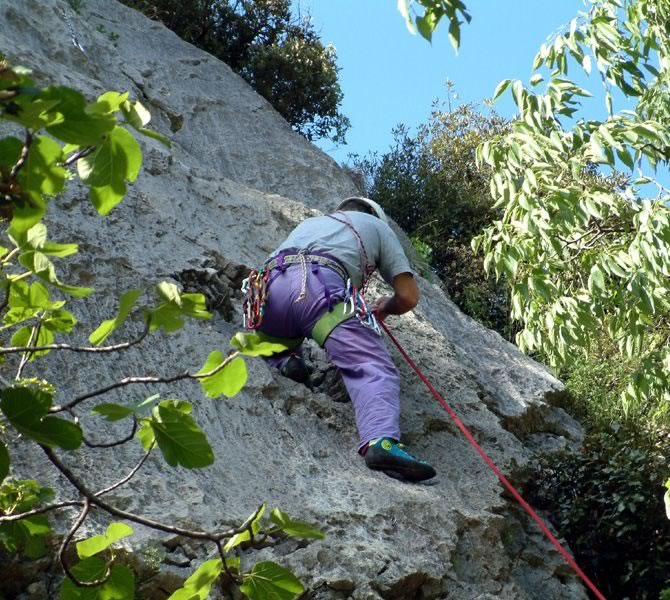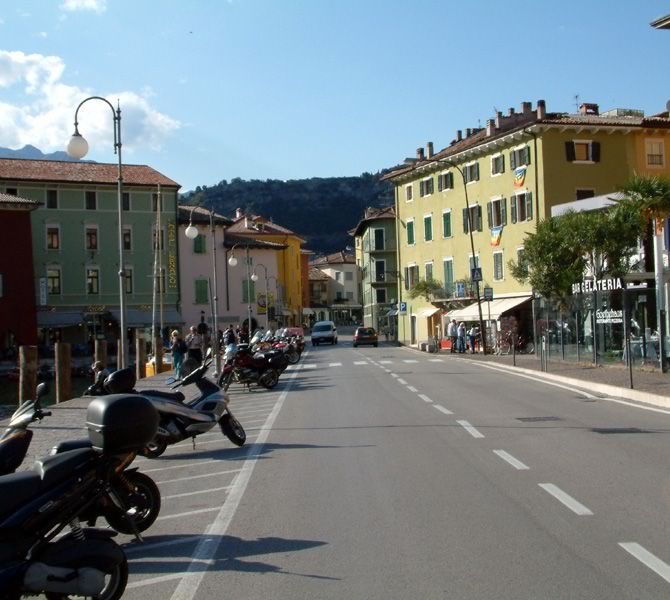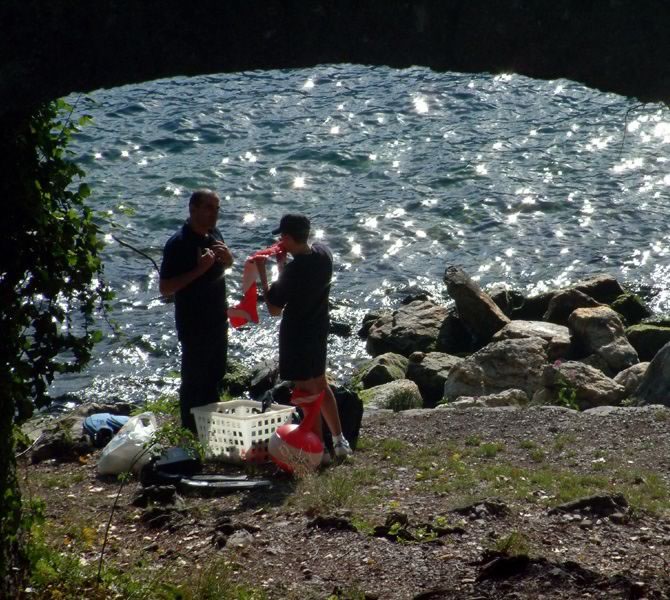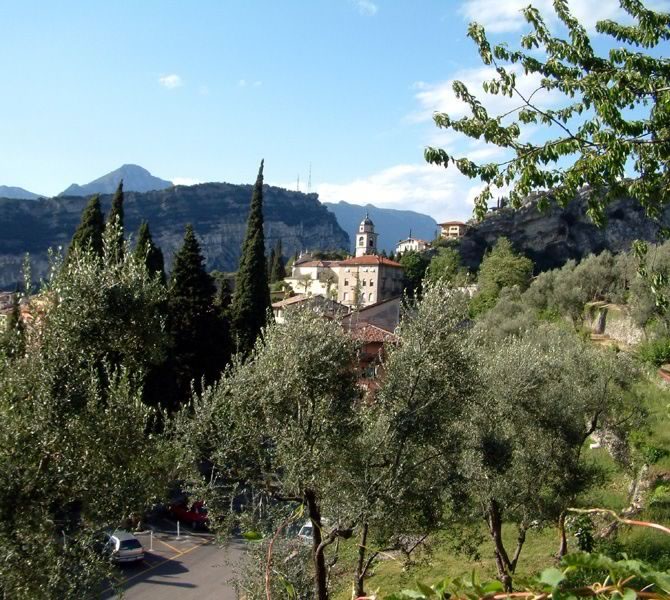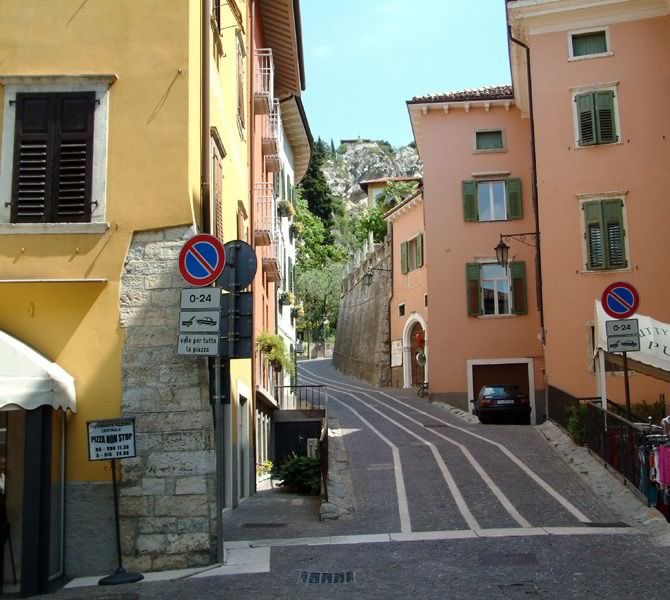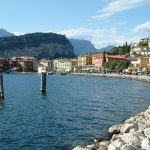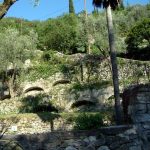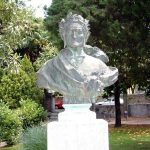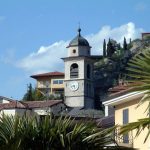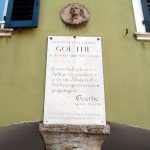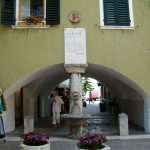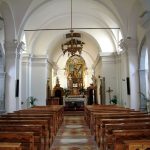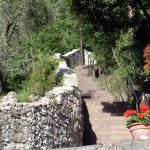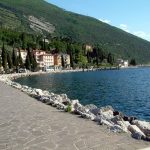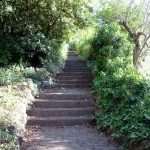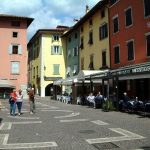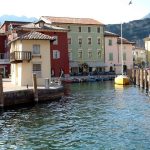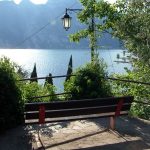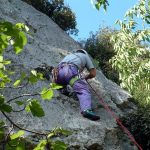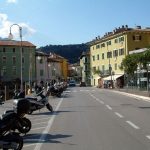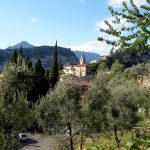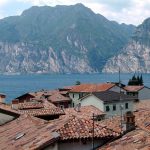Torbole
HISTORY OF TORBOLE
Once the famous German poet Goethe spent a night at Torbole (12th. – 13th. of September 1786). He was enthusiastic about that beautiful landscape and described his impressions, conquered by the wonderful sight of its nature (Travels in Italy). Today you can admire a bronze medal and a column at Piazza Vittorio Veneto, which remembered Goethe’s stay. Other famous visitors of Torbole were Josef II, the son of the Austrian Queen Maria Teresa, in 1765, followed by the French Michel de Montagne, in 1780.
ARTS
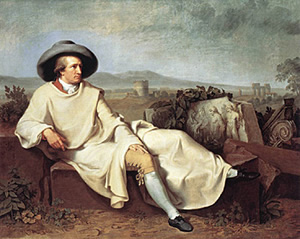 Renowned its little port with a small house “Casa del Dazio”, in those days the place, where they received taxes. Very interesting the parish church, consecrated to Sant?Andrea, in Baroque stile, inside there is high altar piece of Gianbettino Cignoaroli (1741). From here you can have beautiful panoramas of mountains and lake. An old panorama road, coming out of the town, climbs up to Nago, the second hamlet. We can reach a wonderful valley, named ? Valetta di Santa Lucia ?, an untouched landscape with wild vegetation. Long times ago here there was the antique road Via Romana, connecting Lake Garda with Alto Adige region. That road (via) was used by powerful sovereigns, conquering the fertile ground of Italy and the Venetian ship fleet. Indeed, in 1439, during the civil war between the Venetian Republic and the Visconti Family, they transferred a fleet of warships on Adige River, trailed by 2.000 bulls and thousands of men, crossing Mori, Ravazzone up to Loppio.High up on the peaks, commanding Torbole, there are still the ruins of the castle “Castello di Penede” (altitude 285 m), one of the most important fortresses of Garda during the Antic epoch.
Renowned its little port with a small house “Casa del Dazio”, in those days the place, where they received taxes. Very interesting the parish church, consecrated to Sant?Andrea, in Baroque stile, inside there is high altar piece of Gianbettino Cignoaroli (1741). From here you can have beautiful panoramas of mountains and lake. An old panorama road, coming out of the town, climbs up to Nago, the second hamlet. We can reach a wonderful valley, named ? Valetta di Santa Lucia ?, an untouched landscape with wild vegetation. Long times ago here there was the antique road Via Romana, connecting Lake Garda with Alto Adige region. That road (via) was used by powerful sovereigns, conquering the fertile ground of Italy and the Venetian ship fleet. Indeed, in 1439, during the civil war between the Venetian Republic and the Visconti Family, they transferred a fleet of warships on Adige River, trailed by 2.000 bulls and thousands of men, crossing Mori, Ravazzone up to Loppio.High up on the peaks, commanding Torbole, there are still the ruins of the castle “Castello di Penede” (altitude 285 m), one of the most important fortresses of Garda during the Antic epoch.
Climbing up higher and higher, on the new road, in direction to Nago and after 1.5 km we will arrive at an enormous glacial rock, named “Marmitte dei Giganti”. Nago, belonging to the village Torbole with its 2.400 inhabitants, lies at the mouth of Sarca, at the foot of San Zeno. The new part of the village is concentrated nearby the coast, with its church San Rocco (18th. century). But the real parish church is to find in the picturesque “contrada” San Vigiglio, built in the 17th. century. The portal, where you can find the statue of the saint, was constructed in 1569. In the downtown are resting ruins of castles, built up between 1860 and 1862 by the Austrians, today, after well made restores, they are tourist attractions. Going on, in direction to Mori, we can reach after 1.5 km the pass “Passo San Giovanni” (altitude 274m), a little mountain, connecting the valley of Lake Garda with the Alto Adige Region. Then we arrive at the valley of Lake San Loppio, earlier named Lago di Sant’Andrea. One time it was sickened for constructing a gallery, an emergency of giving Adige water to Lake Garda. This large basin today is a “biotop”, a protected area. During rain periods this basin is filled with water and a remarkable event are the white clips outstanding the water.
ATTRACTIONS
The pavese park
The green heart of Torbole, our own little Central Park, which until a few years ago was private property (of the province of Pavia) and is now owned by the local council. The great central building rose as the Grand Hotel in the early ‘900 and was later transformed into a climatic health resort and anti-tuberculosis sanatorium. The plants in the park were planted at the same time as the resort was built. They are now mostly secular trees, among which are many specimens of magnolia, with their large white, sweetsmelling flowers; the high and slender cypresses, the plumbago (in the class of the dicotyledons), the bay (Laurus caucasica rotundifolia), the knee-holly (Ruscus aculeatus), the atlantic cedar, the lagersroemia, the laurel, the broom, the viburnum and the oleander.
Sant’Andrea church in Torbole
This church is found high above the old village and from here you can enjoy beautiful views of the lake and the surrounding mountains. Its history fades in ancient times and the present structure is the result of later extensions and changes. It was first recalled in a document from 1175, when it was just a small chapel dedicated to the fishermen’s Saint. Inside its baroque you can admire an artistic altar-piece of Sant’Andrea’s martyrdrom by Gianbettino Cignaroli (1706-1770) from Verona, an artist who was very wellknown in his time in all Europe’s courts. A beautiful sun-dial has recently been built on the south face (projected by Nones and Patauner), to substitute the ancient one which in olden times showed the time to Torbole’s inhabitants.
San Vigilio church in Nago
Only the bell tower of the very ancient San Vigilio’s church with it’s Romanesque mullioned windows has survived through the centuries. The other parts are the result of restorations which took place through time, the most important of which dates back to the end of the XVI century. It’s a collegiate church, and so we presume that it has been there since the X century, although the most ancient documents about it date back to 1194. The inside is cosy, and the different styles that characterize it show contrast but don’t appear out of place. The main altar is made of polychrome marble, a piece by the Castionesi sculptors who successfully worked in our area during the eighteenth century. The church has four more altars on its sides, the most beautiful of which is probably Santo Stefano’s, consecrated in 1620 (it’s the second on the right). The only frescos found are twelve medallions that decorate the vault, by the roman painter Giustiniani (1921).
Santa Maria al Lago church in Torbole
Is found inside the Pavese park just a few steps from the lake. It was built in 1939 enabling the young people from the sanitarium could go to worship without having to move to the Parish church. Because of it’s prime position many of the communities religious ceremonies are held there.
San Zeno church in Nago
It still holds the beauty and fascination of ancient things more than any other church. Probably built in the seventeenth century, it rises on a small hill inside the village, surrounded by the village’s old houses. Adjoining it there’s a modest building that was, until the eighteenth century, the house of a hermit. Inside the church, there is just one single altar made of marble and a valuable painting of the Saint Bishop of Verona.
San Rocco church in Nago
Is situated beside the road to Rovereto just after the village. Its construction dates back to the sixteenth century, even though archives’ documents states that it was founded “ab antìquo” (in ancient times). Strong belief deems it was built on an ancient lazaret’s remains and was later turned into a church when the plagues became.
The Holy Trinity’s Church in Nago
It rises in piazza Primone, in the middle of the village and was built by a priest from Nago “at his own expense” to replace a smaller church, where he was the chaplain. Inside it, on the main altar, there’s a beautiful wooden statue of God as the Father with his crucified Son in his lap, made by an artist from Alto Adige in the fifteenth century.The church pertained to the Holy Trinity’s Brotherhood.
Castel Penede
Just a few ruins are left of this ancient castle, which bears witness to what was once a great and important medieval fortress of remarkable size. It’s origin probabley should be investigated as an evolution of a prehistoric castle-like building. Results from archaeological finds show that the site has in fact been inhabited since the Roman ages. The first official note about the castle dates back to 1210. The vicissitudes of this ancient manor are very complex, its history is concerned with the frequent battles between the local squires of Venetian and Lombard seignories. It was taken possession by the Counts of Arco, the Castelbarco, the Scaligeri, the Visconti and the Serene Republic of Venezia. Most of all it was a feud of the Prince Bishop of Trento. In 1703 it was pillaged and set on fire by the French general Vendome’s troops, that came to Trentino as a consequence of the Spanish War of Succession.
The Sacred Aedicules
They are the sign and testimony of a strong religiousness that once animated our communities. Varying in shape and location, some are incorporated in old houses & some inside old courtyards and they nearly all take the shape of a hollow inside the wall, and may be with or without a small roof. Many of them are real buildings, even if usually very small ones. There are many along the country roads flanked with high walls and they are often found above or leaning against the walls that divide and once defended the small peasants’ properties. There they look like real aedicules: a short wall with a niche and a two sloping roofs in sandstone. Throughout the municipal territory there are more than forty “capitani” to be found dedicated to various popular saints. However in Torbole & Nago the Madonna appears more frequently. The most famous of all is that of San Giovanni Nepomuceno, protector of travellers, found by the homonymous pass in Nago.
The Forts of Nago
After the second Independence War (1859), as the Austro-Hungarian Empire lost Lombardy, the government in Vienna took the trouble to provide its new borders with strong defensive buildings. The forts of Nago were among the first that had been built in Trentino between I860 and 1862.Our fortresses had the whole of North Garda under control. Out of the openings came out two threatening arrays of cannons, eight in the upper line and six in the lower.Against them World War One’s gun-shots could hardly do nothing. As very often happens in that period’s fortifications, we can find a certain decorative taste, in this case represented by the hewn stones that delimitate the loopholes.The great fort of Nago, after decades of carelessness, has now been restored inside and out at the expense of the municipal and provincial administrations. It is now used to hold exhibitions and cultural events.
The Funeral Monument to Vincenzo Errante
Vincenzo Errante (Roma 1890 – Riva del Garda 1951) was one of the most important Italian translators of English, German, Greek and Latin poets. He loved Torbole and its lake so much that he asked to be buried on the hill by Sant’Andrea’s church. His tomb, designed by architect Pietro Gazzola from Verona, has the shape of an octagonal small temple, in the open air. It was built using raw porphyry tiles & on the back wall, there’s a bronze head representing Errante, by the German sculptor Fleming, with the epigraph below written by Rinaldo Kufferle. All around on the walls in marble bas-reliefs, you will find open books with engraved verses by Catullo, Eschilo, Goethe, Shakespeare, Wagner, Holderlin, Banville, Rilke, in the original language and with Errante’s translation. The chapel also holds the remains of Errante’s wife, who died in 1957.
The Funeral Monument to W.O. Darby
On 30 April, 1945, five days after Milan’s liberation, a contingent of American troops came to Torbole on the lake with amphibious landing-crafts and after a violent battle occupied the village, that was under the German control of Wermacht detachments. On the day that the weapons had become silent after the long war, Colonel William 0. Darby, commander of the American rangers that had landed in Torbole, was enjoying this great moment with his friends, when some bombs were shot from a German artillery stationing on Mount Brione, and their splinters hit & killed some soldiers and the colonel. Fifty years after his death, in 1995, his soldiers wanted to remember their commander’s sacrifice with a pillar which has been erected in front of Santa Maria al Lago church.
